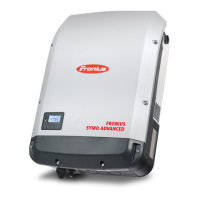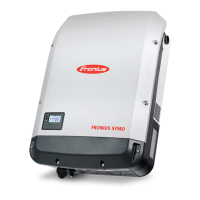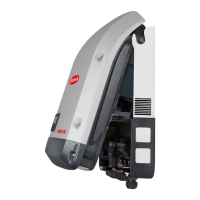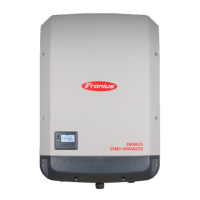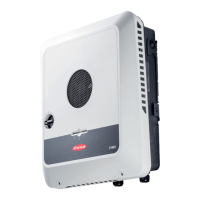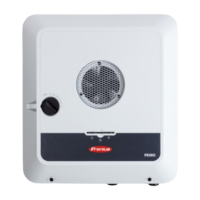Copper (Cu)/aluminum (Al) 480 V
A
C
AWG 10/AWG 10
Preparing Alu-
minum Cables for
Connection
The AC-side terminals are designed for connecting single-wire, round aluminum cables.
Due to the reaction of aluminum with air that creates a tough, non-conductive oxide layer
the following points must be considered when connecting aluminum cables:
- Reduced rated currents for aluminum cables
- The connection requirements listed below
Always follow the instructions of the cable manufacturer when using aluminum cables.
Take into account local specifications when configuring cable cross sections.
Connection Requirements:
1
Carefully clean off the oxide layer of the stripped end of the cable, e.g., using a knife
IMPORTANT! Do not use brushes, files, or sandpaper; aluminum particles may get stuck
and can transfer to other cables.
2
After removing the oxide layer of the cable end, rub in a neutral grease, e.g., acid-
free and alkali-free Vaseline
3
Then immediately connect it to the terminal
IMPORTANT!Repeat the steps above whenever the cable is disconnected and then
reconnected.
Monitoring the
grid
The resistance in the leads to the AC-side connection terminals must be as low as pos-
sible for optimal functioning of grid monitoring.
Connecting the
Inverter to the
Public Grid (AC)
NOTE!
To ensure a proper ground connection, all grounding terminals GND must be
tightened with the specified torque during installation.
NOTE!
Form loops of at least 4 in. (102 mm) in the AC cables when connecting them to
the AC terminals.
IMPORTANT! The ground conductor GND of the AC cable must be laid so that it is dis-
connected last.
Measure the ground conductor GND longer, for example, and loop.
27
EN-US

